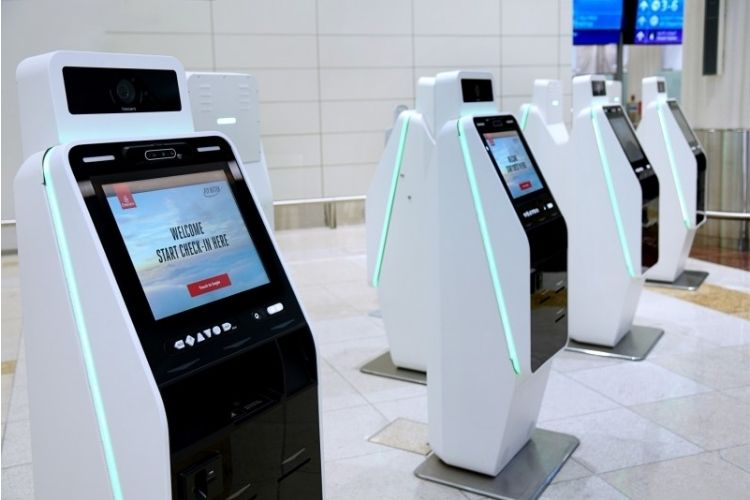Emirates’ self-check-in and bag drop kiosks at Dubai International (DXB) (which made its debut in September last year) have now gone touchless further enhancing the smart contactless journey for passengers travelling from Dubai.
According to Emirates, the 32 self-service bag drop machines and 16 check-in kiosks can be controlled completely by personal mobile devices without touching the screens; providing a safe and convenient airport experience. The kiosks allow customers to check-in, receive their boarding pass, choose seats on board, and drop off their bags.

New services have also been added to allow passengers to make payments for ancillary purchases, such as additional baggage allowance, directly at the kiosks.
The self-check-in kiosks, placed at the Economy check-in area in Terminal 3, complement the desks manned by Emirates check-in agents to reduce waiting time for customers during peak periods and improve the experience in Dubai. The service is now available to customers travelling to all destinations except to; the US, Canada, China, India and Hong Kong due to additional requirements from these destinations.
Also read: Emirates Partners with GE Digital and TE Food to Trial TrustOne
Emirates has spared no effort in creating a smart contactless journey for its customers. Travellers can also choose to use its integrated biometric path to breeze through DXB. Utilising the latest facial biometric technology, Emirates passengers can; check-in for their flight, complete immigration formalities, enter the Emirates Lounge and board their flights simply strolling through the airport.
The smart contactless experience continues on board with digital menus available on the Emirates app allowing customers to browse the menus on their personal devices both online and offline; as well as on Emirates’ Wi-Fi portal without needing to purchase a Wi-Fi package.
The Emirates app can also create a preferred playlist with over 4,500 channels on inflight entertainment (IFE) on ice. And sync it to their personal screens on board. Soon, passengers will also be able to control their viewing experience on the IFE screens, with their personal devices.
Emirates has been using smart technology to ensure its customers travel safely. And the airline continues to invest in product and service to provide an unmatched travel experience on ground and onboard.







